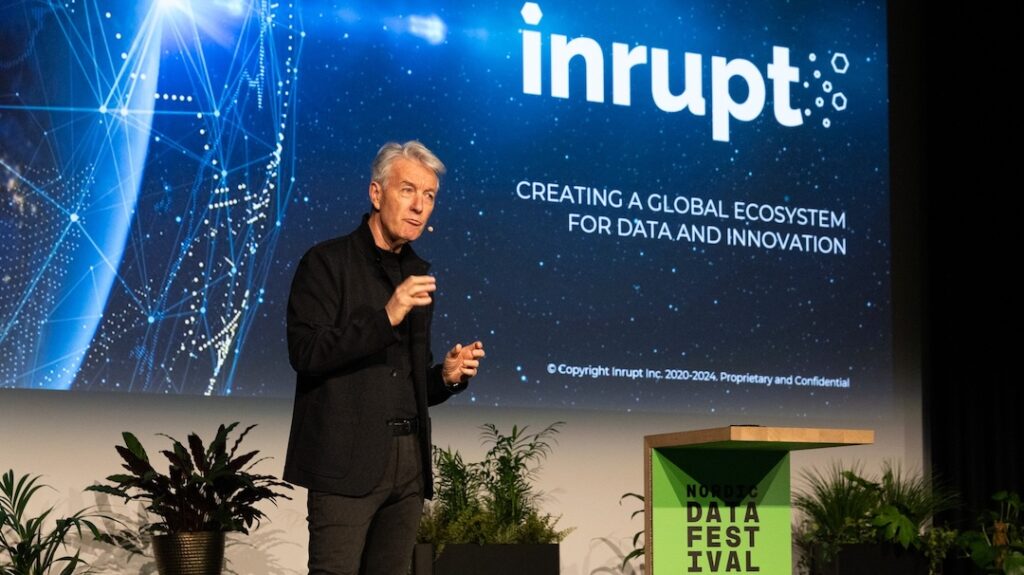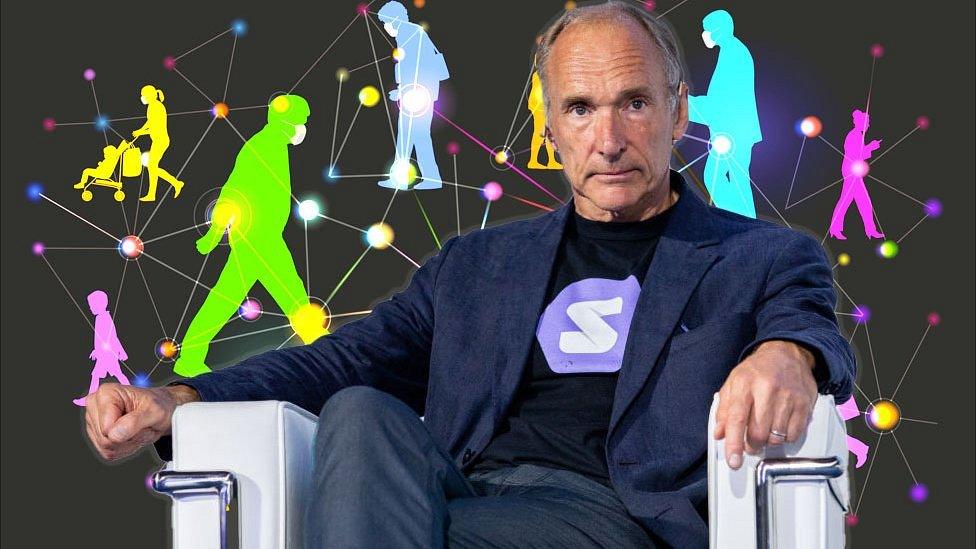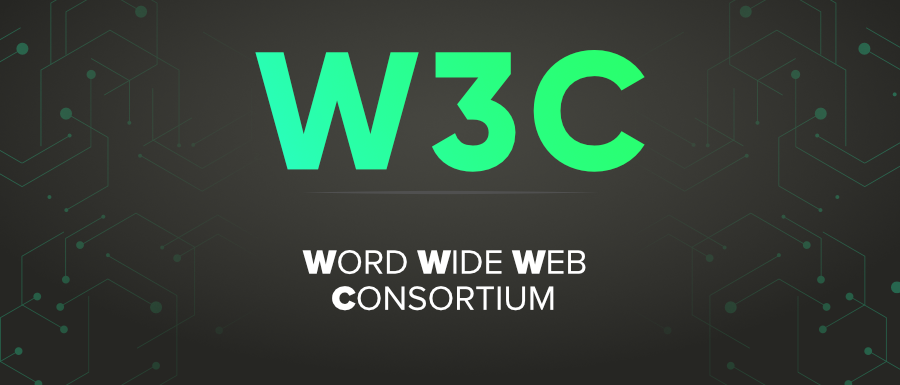A fundamental shift is underway on the Internet, promising profound implications for consumers, citizens, and businesses alike. Spearheaded by pioneers like Tim Berners-Lee, the inventor of the World Wide Web, and supported by companies like Inrupt, this evolution aims to reshape our digital experiences and economies.
At the heart of this transformation is Solid, a groundbreaking project developed by Berners-Lee. Solid is a “new phase, new era of the web”. Introduces three critical new standards designed to fundamentally alter how we interact online.
Web 3.0’s Next Frontier: Tim Berners-Lee Unveils “Solid” for a User-Centric Internet
“Solid represents an important new phase, new era of the web. It adds three new standards to the web”.
These standards include:
- Global Sign-On: For the first time, users can seamlessly sign on to any service, anywhere, with a single, unified identity. This addresses a long-standing fragmentation issue on the current web.
- Global Access Control: Solid IDs, derived from a Solid login. Will allow individuals to grant or revoke access to their data for any application or service. Giving users unprecedented control over their digital footprint.
- Universal API for Data Access: A common, universal protocol enables applications to read data from any personal data store, known as “Solid Pods.”
What are Solid Pods?
The creators describe Solid Pods as “personal cloud storage”—essentially, a “USB key in the sky”. These secure storage units allow users to store and share data selectively, revoking access at any time.

John Bruce, a co-founder of Inrupt, a company dedicated to making Tim Berners-Lee’s Solid technology accessible, highlighted the broad implications.
“This change has big implications for all of us as consumers, as citizens, as business people. We really want to focus on what these changes will really mean for the way we all experience the web and the way we can build businesses”.
Inrupt aims to help the world experience the benefits of Solid technology. While “Web 3.0” remains a buzzword for many, Berners-Lee and the Inrupt team are working to deliver tangible advancements. That empower users and foster new business models built on a more decentralized and data-sovereign Internet. Early projects around the world are already leveraging these new standards. Signaling a significant evolution in how the Internet operates and how they manage our data.
Unlocking Opportunity: Why Web 3.0 is the Web’s Next Evolution in Data Control and Societal Benefit
The digital landscape, which once offered open access and user empowerment, now grapples with a fundamental flaw: data exploitation. The current Web 2.0 model has created societal problems—corporate monopolies, invasive surveillance capitalism, and the indirect spread of misinformation—which a new wave, Web 3.0, is poised to address.
The current system locks consumers into platforms, primarily because consumers cannot easily use their data elsewhere. This has ignited a fierce “big data race” among major platforms, where control over user data dictates dominance. Leaving the vast majority of users—the very creators of this valuable data—with little in return.
The Web’s Broken Promise: How Web 3.0 Aims to End Data Exploitation and Monopolies
“Our data were stuck in systems that we as citizens, as consumers couldn’t control. That’s how we ended up with an online economy that used data to exploit people instead of benefiting them”.
While some companies boast about their ability to predict user needs through data analysis, this approach directly contradicts the web’s foundational philosophy of self-empowerment.
“Data today doesn’t benefit from the web’s principles of open access, individual empowerment,” the analyst continues. “The approach to data is fundamentally broken”.
However, the good news is that the web itself is ready to offer solutions. Web 3.0 will unlock the next wave of opportunity, benefiting individuals, organizations that seek to serve them, and innovative developers.
Web 3.0 promises a future where the data generated by web users benefits them directly. Fostering a more equitable and innovative digital economy.
Unlocking the Web’s Potential: Solid’s Zero-Cost Approach to Data, Users, and IoT
Now, a new era is dawning with Web 3.0, powered by technologies like Tim Berners-Lee’s “Solid” project, promising a paradigm shift towards “zero cost” for data sharing. Also user interaction, and even the burgeoning Internet of Things (IoT).

Web 3.0’s “Zero Cost” Revolution: Reimagining Data Sharing, User Control, and IoT Integration
For years, companies have leveraged the near-zero cost of distributing products and services globally, coupled with the ability to gather vast amounts of user data. However, a significant hurdle emerged: the lack of a common standard for organizing this data. This has led to proprietary databases. Making data sharing and reuse within and across organizations, economies, and even personal lives incredibly difficult—a system far removed from the web’s original intent.
“Solid now brings the cost of sharing data again to zero. Because it’s a common way to store data and to access it”.
Key Benefits of the “Zero Cost” Model
- User Empowerment: Individuals no longer need to repeatedly enter the same information. With Solid, users can grant specific access to their data (known as “zero-party data”). Enabling organizations to understand and service them better without costly data scraping. This fosters a clearer understanding of data usage and eliminates vendor lock-in. Allowing users to enjoy better relationships with service providers.
- Developer Efficiency: Developers benefit from a common API and data standard, freeing them from complex back-end development issues. This allows them to focus on creating quality products and services, driving innovation.
- Enhanced Interoperability: The universal data standard and direct user connections break down existing data silos. Enabling data to flow freely across different applications, organizations, and aspects of a user’s life.
Empowering the Future: W3C Solid Community Delivers Solutions for Data, Business, and Citizens
What began as a vision is rapidly evolving into a global movement, with the W3C Solid community at its forefront. This vital group is building the foundational “third layer” of the web.
W3C Solid Community: Architecting the Next Frontier of the Web for a Trusted Digital Future
The W3C Solid community is actively developing the core Solid protocol, ensuring it’s robust and ready for widespread adoption. Exciting deployments are already underway worldwide, showcasing the tangible impact of this collaborative effort.
“Wherever the weather that’s been missing since 1989 but that we now have the core Solid protocol is in good shape”.
This sentiment underscores the breakthrough nature of their work in establishing a unified approach to data.

A Call to Action for Stakeholders
The Solid movement extends a clear invitation to key players in the digital ecosystem:
- For Developers: “It’s time to create apps that access this huge pool of trusted data that people are starting to share”, urges the community. Developers can now build applications without the burden of creating custom back-end databases. Tapping into a vast repository of user-consented data.
- For Businesses and Governments: The power of trusted data is now within reach. Organizations can build new strategies around Solid to develop novel value for customers and citizens. By embracing Solid, they can move beyond the limitations of data silos and focus on core competencies.
- For Individuals: Those seeking better healthcare, job creation, commerce, and government services are invited to “get ready to enjoy a better web.” The collective adoption of Solid promises immeasurable benefits for individuals, offering greater control and improved services.
The W3C Solid community is not just about a protocol. It represents a vital piece of the web’s evolution. With proven technology, available expertise, and a fast-growing community of developers, corporations, and governments collaborating on projects, the momentum is undeniable.
The message is clear. The W3C Solid community is building the third layer of the web. It is inviting everyone to “come aboard this fast-moving train”. Also get to work on creating a more beneficial digital future for all.

